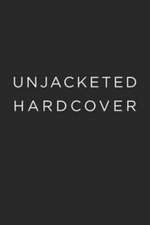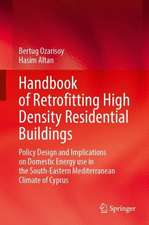A Corpus of Rembrandt Paintings V: The Small-Scale History Paintings: Rembrandt Research Project Foundation, cartea 5
Editat de Ernst van de Weteringen Limba Engleză Hardback – 20 oct 2010
Preț: 3157.94 lei
Preț vechi: 3851.14 lei
-18% Nou
604.35€ • 628.62$ • 498.92£
Carte disponibilă
Livrare economică 24 martie-07 aprilie
Specificații
ISBN-10: 1402046073
Pagini: 674
Ilustrații: XVIII, 674 p. 898 illus., 629 illus. in color.
Dimensiuni: 1 x 1 x 109 mm
Greutate: 4.56 kg
Ediția:2011
Editura: SPRINGER NETHERLANDS
Colecția Springer
Seria Rembrandt Research Project Foundation
Locul publicării:Dordrecht, Netherlands
Public țintă
ResearchCuprins
Preface.- Bibliographical and other Abbreviations.- Essays:.- I. Towards a Reconstruction of Rembrandt’s Art Theory.- II. An Illustrated Chronological Survey of Rembrandt’s Small-Scale ‘Histories’: Paintings, Etchings and a Selection of Drawings, with Remarks on Art-Theoretical Aspects, Function and Questions of Authenticity.- III. Rembrandt’s Prototypes and Pupils’ Production of Variants.- IV. On Quality: Comparative Remarks on the Functioning of Rembrandt’s Pictorial Mind.- V. More than One Hand in Paintings by Rembrandt.- Catalogue of the Small-Scale History and Genre Paintings 1642-1669 by Rembrandt and his Pupils.- Corrigenda et Addenda.- Indexes.
Notă biografică
Ernst van de Wetering is professor emeritus of art history at the University of Amsterdam. He has been involved with the Rembrandt Research Project since the beginning and has been chairman of the project since 1993. Internationally renowned as the authority on Rembrandt and his paintings, Van de Wetering has published extensively on the topic of historic painting techniques, as well as on the field of theory and ethics of conservation and restoration.
Textul de pe ultima copertă
This is the fifth volume of A CORPUS OF REMBRANDT PAINTINGS, which will consist of six volumes in total. The CORPUS is dedicated to the painted works of Rembrandt. It aims to isolate Rembrandt’s own works from the great volume of Rembrandt-like paintings, produced by his many pupils and followers, sometimes with the involvement of the master himself. The fourth volume (Springer 2005) was dedicated to Rembrandt’s self-portraits. This fifth volume is about the small-scale history and genre paintings. The so-called ‘histories’ (paintings, etchings and drawings with biblical or mythological scenes) were considered to be the most challenging assignments for an artist. All kinds of artistic insights and skills – known in Rembrandt’s time as the basic aspects of the art of painting - played a role in the creation of this kind of work, especially in the history paintings. Systematic research into this hitherto little known area has revealed a rich, and often fresh understanding of Rembrandt’s own way of thinking about these basic aspects, which makes the present volume a unique and innovative contribution to the history of art. A detailed comparison of Rembrandt’s own work with that of his pupils has furthermore provided a detailed access to Rembrandt’s own criteria regarding artistic quality.
Caracteristici
Reveals a profound insight into Rembrandt’s original views on painting and how these had developed during his career
Provides a new impetus to the research on Rembrandt by a detailed understanding of Rembrandt’s views on pictorial quality
Descriere
This volume is the fifth volume of A Corpus of Rembrandt Paintings, a project devoted to all Rembrandt’s paintings. This is the work of ‘The Rembrandt Research Project’, consisting of a group of scholars led since 1993 by Professor Ernst van de Wetering. The project began in 1968 with the aim of separating Rembrandt’s own paintings from the vast number of Rembrandtesque paintings made by his many apprentices and followers. Having opted for a chronological approach to the cataloguing of Rembrandt’s paintings (from 1625 till 1642) in the first three volumes, it was decided in 1993 to adopt a thematic approach for further volumes. This was largely to facilitate the recognition of different hands. The new approach yielded much more information not only about Rembrandt’s working methods but also about the function and meaning of his works. This expanded field of view meant that etchings and drawings with similar themes also needed to be included. In 2005 Volume IV appeared, devoted to Rembrandt’s self-portraits, in painting, etching and drawing. Volume V consists of a catalogue and analysis of the so-called small-scale history and genre paintings. That theme was chosen because this type of complex work shows a variety of full-length protagonists acting in different narrative settings. For this reason, in the 17th century, painting, etching or drawing biblical and mythological scenes was looked upon as an artist’s greatest challenge. The choice of this theme proved to be highly fruitful in several ways. Small-scale history pieces reveal Rembrandt’s artistic ambitions most clearly. They also offer the authors a much more accurate view of the daily routine in Rembrandt’s studio; his apprentices mostly copied this type of work or used it as a starting point for their own. As a result it was easier to distinguish the works by the master himself from those of his pupils. All aspects of the skills necessary to create a pictorial illusion play a part in the creation of small-figured history paintings. These aspects were referred to as ‘the basis of the noble art of painting’ in Rembrandt’s days. Two seventeenth century painter/theoreticians discussed these principles systematically in two books which up till now have only sporadically been consulted in the context of 17th century studio practice. Karel van Mander wrote his Grond der edel vry schilder-const [Basis of the Art of Painting] in 1604 and Samuel van Hoogstraten produced his Inleyding tot de hooge schoole der schilderkonst [Academy of Painting] in 1678. Van Hoogstraten was a pupil of Rembrandt between 1642 and ’48. Comparing the two books and considering them in relation to Rembrandt’s oeuvre, gradually reveals his original views on painting and how these had developed during his career. Thus, the authors of this new Volume of A Corpus have gained an unexpected and profound insight into Rembrandt’s ideas and approach to his art. The ‘basic aspects’ of painting included the following topics: function and methods of drawing; human proportions; various positions, poses and gestures of figures; ways of arranging a scene’s protagonists in a composition; facial expressions of a variety of emotions; light, shadows and reflected light; landscape and animals; draperies and articles of clothing; methods of painting, and various characteristics and uses of colours. The way these ‘basic aspects’ were selected and dealt with presumed that the more practical side to the art of painting would be learned by the apprentice in the daily routine of his master’s studio. With the development of art history in the nineteenth century the ‘basic aspects’ of the art of painting listed above acquired the vague label of ‘style’. However, the seventeenth century categorization of the ‘basic aspects’ provides a much more acute means of probing the views and criteria for judging a painting by Rembrandt and his contemporaries than the concept of ‘style’. Volume V in the series A Corpus of Rembrandt Paintings breaks new ground from the point of view of art history, not only in its approach to Rembrandt as an artist, but more particularly to his thinking about painting. Moreover, a detailed comparison of Rembrandt’s works and those by his apprentices who based their works on his, led to a profound and detailed understanding of Rembrandt’s views on pictorial quality. In art historical literature quality usually does not feature prominently since it is regarded as being too subjective. This comparative approach, together with the analysis of seventeenth century categories of thought about painting, have given the research on Rembrandt a new impetus, at the same time allowing us to see more clearly through seventeenth century eyes. That is why the new volume of the ‘Corpus’ is an important publication – not only for art historians but also for all who want to fully enjoy the numerous works of art that date back to the Dutch Golden Age, now scattered in museums around the world.



























